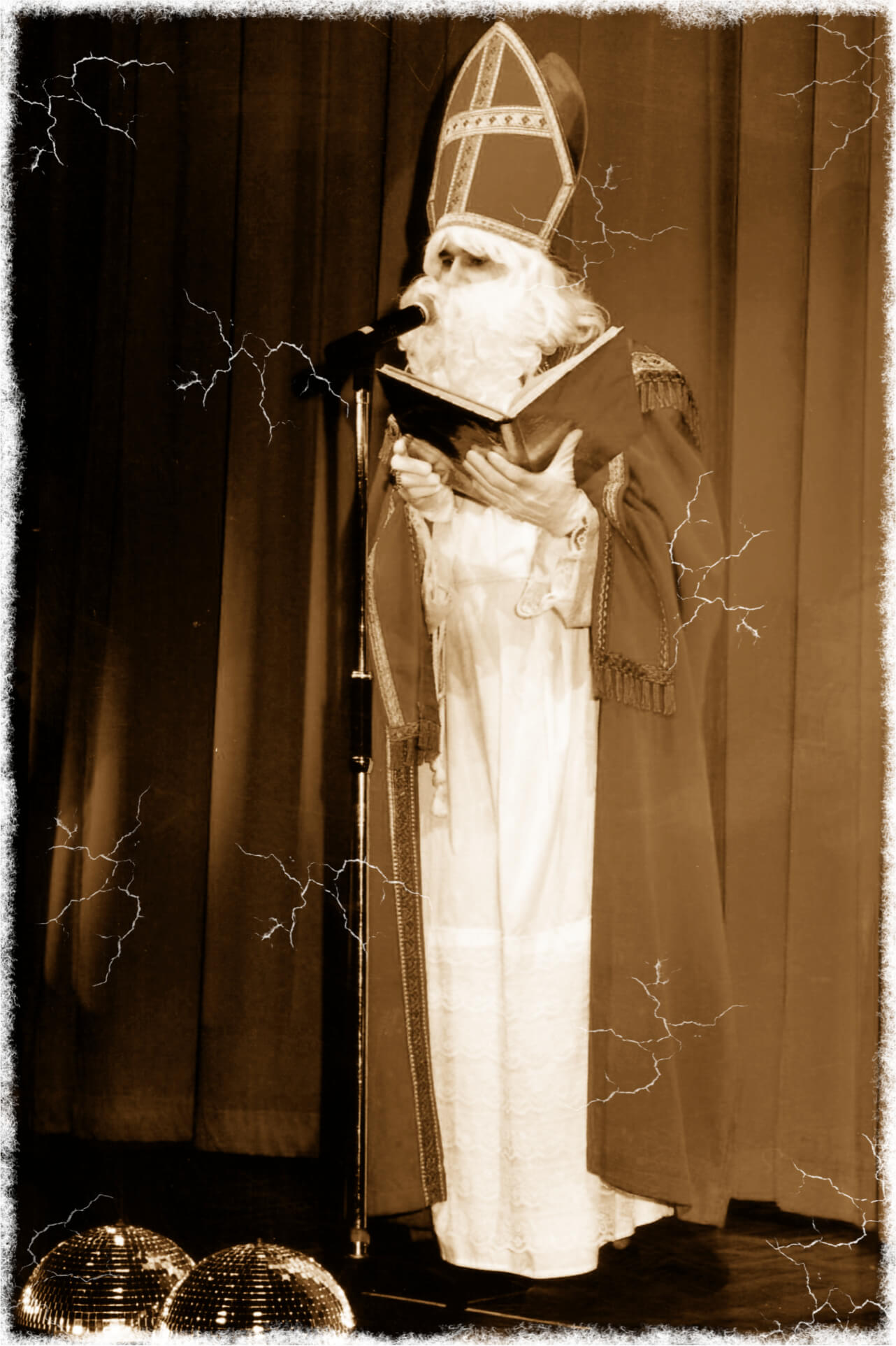The Bishop's Costume
Our professional Father Christmas comes to you in a bishop's costume (as pictured). This costume consists of:
- the mitre
- the alb
- the cigulum
- the stole
- the pluviale
- the shepherd's crook
- the bishop's ring
You can see more details below.

The mitre
The mitre is worn by all bishops, as well as by other clergy entitled to do so, especially abbots (so-called infulted abbots). It is a headdress that ends in two points and can be traced back to the 10th century. Since the Renaissance, the mitre has grown more and more in height, while its current shape resembles that of the 13th century.
The alb
The alb (from Latin albus "white") is the basic liturgical vestment. It is basically ankle-length and is reminiscent of the baptismal garment and the white vestments of St John's Revelation. All those who perform a liturgical service at the altar can or should wear alb or vestments derived from the alb (e.g. a choir shirt over the gown).
The cingulum
The cingulum is a rope that gathers the alb as a belt (form: ribbon-shaped or cord-like, usually with tassels on the edge); as a broad band of cloth in various rank colours, zingula are also worn by the clergy over the cassock.
The stole
The stole, a shawl-like garment about knee-length on both sides, is the insignia of the priestly office. Bishops, priests and deacons wear it at all sacramental celebrations, liturgies of the word, devotions and acts of blessing which they lead or at which they assist, in some circumstances (for example at the bedside of a sick person) directly over their everyday clothing or alb, at Mass usually under the chasuble. Before the liturgical reform, the stole was crossed in front of the chest by the priest; it has always been worn by the bishop in its present form. The deacon's stole is worn diagonally across the chest and back and rests on the left shoulder. The stole is interpreted as the "yoke of Christ", cf. Mt11,29.
The pluvial
The choir coat (also called vesper coat, smoke coat or Latin pluviale - "mackintosh") is an outer garment derived from the chasuble, which today is mostly used outside the celebration of Mass, e.g. at devotions, processions and funerals.
The shepherd's crook
The crook (ancient Egyptian heqa, auet ruler's sceptre, shepherd's crook, otherwise also abbot's crook, lituus, baculum pastorale, bishop's crook, pastoral crook, pastoral and pedum or virga) is attested as an ancient Egyptian insignia as early as the Old Kingdom (2707-2216 BC) and was adopted as a religious symbol of rulership by many countries.
Among the first mentions is the shepherd's crook, which the Archbishop of Canterbury bestowed on the Abbot Theodore of Canterbury. The crozier was first attested around the year 600 at the consecration of St Columban of Luxeuil. The actual crozier spread in its use especially among ecclesiastical dignitaries in the 7th century in Spain and France, outside the liturgy as a symbol of jurisdiction.
The Bishop's Ring
The bishop's ring (Latin: anulus pontificalis) is one of the insignia and pontificals of bishops and abbots in the Roman Catholic Church, but is also worn by Lutheran bishops. It is usually golden and set with precious stones, but can also be designed differently. It is put on with the words "Take the ring, the seal of faithfulness, that you may guard God's holy bride, the Church, adorned with unchanging faithfulness, unharmed" at the consecration of a bishop or abbot. The pope wears the so-called fisherman's ring.
The bishop's ring is the sign of the bishop's bond to his diocese or the abbot's bond to his community, just as the wedding ring symbolises the lasting bond between spouses. The ring first appears with the staff in Isidore of Seville in his work De ecclesiasticis officiis (II,5) and at the Council of Toledo in 633 (can. 28).[1] Since the year 1000, the ring has been worn by bishops and abbots.





